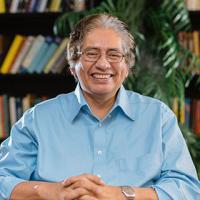Article,
Physiological and behavioral adaptation to varying environments: a mathematical model
Evolution, 42 (5): 986-994 (1988)
Abstract
The model, which explores the evolution of habitat selection and physiological adaptation in a heterogeneous environment, assumes 1) a panmictic population of infinite size; 2) prereproductive individuals mobile enough to move between patches; 3) alleles at one locus code for absence or presence of adaptation to detrimental patches; 4) alleles at a 2nd locus code for absence or presence of behavior(s) that cause avoidance of the detrimental patches; 5) additive effects of alleles controlling physiology and behavior; 6) frequency-independent fitness. Results indicate that nontrivial, polymorphic equilibria do not exist. The pattern of genotypic fitnesses and the initial allelic frequencies can influence whether the population adapts by physiological or behavioral mechanisms, or by both. Linkage between the 2 loci can alter the outcome of evolution, given specified genotypic fitness values and initial allelic frequencies. -from Authors
